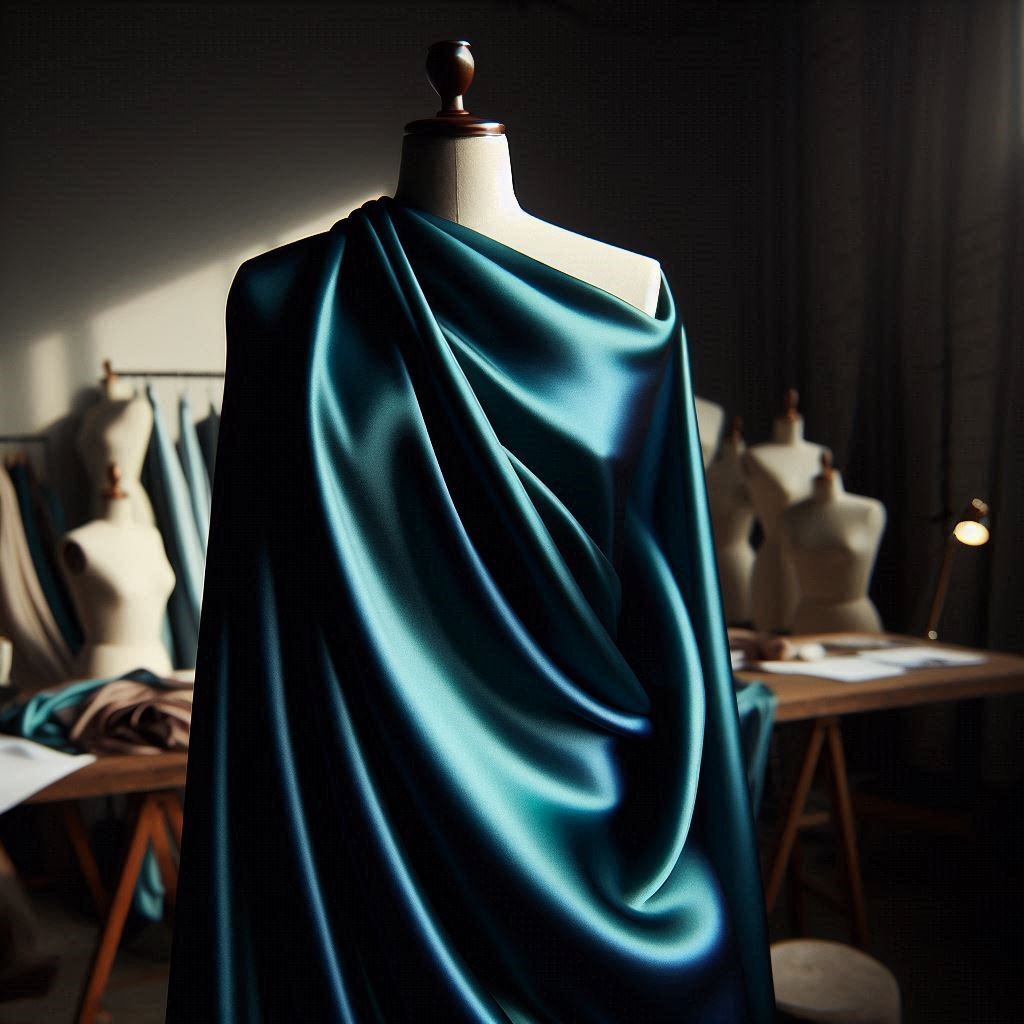- Introduction to sleek fabric nyt
- Types of sleek fabric nyt and their Uses
- The Pros and Cons of Using Sleek Fabric
- Alarming Facts about the Environmental Impact of Sleek Fabric Production
- Sustainable Alternatives to sleek fabric nyt
- How to Make More Informed Choices as a Consumer
- Conclusion: Balancing Style and Sustainability with sleek fabric nyt
- FAQ’s
- General Information
- Product-Specific Information
- Care and Maintenance
Introduction to sleek fabric nyt
Sleek fabric nyt has taken the fashion world by storm, offering a modern and stylish twist to clothing, accessories, and home decor. With its smooth texture and polished appearance, it’s hard to resist the allure of this chic material. But as we embrace these fashionable fabrics, it’s crucial to look beyond their surface appeal. What goes into creating sleek fabric? How does it affect our environment? Join us on a journey through the fascinating yet complex landscape of sleek fabric nyt—where style meets sustainability—and discover what you need to know before adding it to your wardrobe or living space.
Types of sleek fabric nyt and their Uses
Sleek fabric nyt comes in various types, each with its own unique qualities. One popular option is satin, known for its glossy finish and luxurious feel. It’s commonly used in evening wear and bridal gowns, giving a touch of elegance to special occasions.
Then there’s nylon, a lightweight choice that’s both durable and water-resistant. It finds favor in activewear, jackets, and outdoor gear due to its ability to withstand the elements while maintaining breathability.
Another noteworthy type is polyester blends. These fabrics combine comfort with versatility, making them ideal for everyday clothing like shirts and dresses.
There’s spandex often mixed into sleek fabrics for added stretchiness. This elasticity makes it perfect for form-fitting garments such as leggings or shapewear. Each type serves distinct purposes while keeping style at the forefront.
The Pros and Cons of Using Sleek Fabric
Sleek fabric has gained popularity for its aesthetic appeal. Its smooth texture gives garments a modern and polished look, making it a favorite in high-fashion circles.
On the bright side, sleek fabrics are often lightweight and comfortable. They drape beautifully on the body, enhancing various styles without adding bulk. Many appreciate their easy care; most can be machine washed or dry cleaned with minimal effort.
However, not all that glitters is gold. Some materials used to create sleek fabrics can cause discomfort due to moisture retention. This might be an issue for those who lead active lifestyles.
Additionally, there’s the question of durability. While they may appear chic initially, certain sleek fabrics wear out faster than traditional options under frequent use and washing. Balancing these factors is crucial for informed choices in your wardrobe decisions.
Alarming Facts about the Environmental Impact of Sleek Fabric Production
The production of sleek fabric is often celebrated for its aesthetic appeal and versatility. However, the environmental consequences are increasingly concerning.
Manufacturing these fabrics typically involves synthetic materials like polyester or nylon, derived from petroleum. This process contributes significantly to fossil fuel depletion and greenhouse gas emissions.
Moreover, the dyeing processes used in creating vibrant colors release toxic chemicals into water systems. These pollutants can devastate aquatic life and contaminate drinking water sources.
Water usage in fabric production is another alarming factor. It takes thousands of gallons to produce just one yard of sleek fabric. This puts immense pressure on local water supplies, especially in areas already facing scarcity.
After their lifecycle ends, many sleek fabrics do not decompose easily. They contribute to overflowing landfills and microplastic pollution that infiltrates our oceans and ecosystems.
Sustainable Alternatives to sleek fabric nyt
Exploring sustainable alternatives to sleek fabric nyt opens a world of eco-friendly options. Organic cotton stands out as a popular choice. It’s soft, breathable, and grown without harmful chemicals.
Another fantastic alternative is Tencel, made from sustainably sourced wood pulp. This biodegradable material offers a silky feel while also being gentle on the environment.
Recycled polyester is gaining traction too. Utilizing plastic waste reduces landfill contributions and minimizes resource consumption in production.
Hemp fabric deserves attention as well. Known for its durability, it requires far less water than conventional cotton during cultivation.
Consider innovations like Piñatex—crafted from pineapple leaf fibers—or other plant-based textiles that highlight creativity in sustainability.
These alternatives not only offer style but also pave the way for responsible consumer choices in fashion.
How to Make More Informed Choices as a Consumer
Understanding your choices is key in a market flooded with options. Start by researching the brands you support. Look for transparency in their manufacturing processes and sourcing.
Check labels carefully. They can reveal whether the sleek fabric nyt contains harmful chemicals or if it’s produced sustainably. Knowledge about certifications like OEKO-TEX or GOTS can also guide your decisions.
Don’t hesitate to ask questions directly from manufacturers or retailers regarding their materials and practices. Engaging with companies on social media might provide insights not available on their websites.
Consider second-hand markets too. Vintage clothing often features high-quality fabrics that have stood the test of time, including sleek fabric nyt alternatives without new production impacts.
Connect with communities focused on sustainable fashion. Sharing information leads to better choices collectively while keeping style intact.
Conclusion: Balancing Style and Sustainability with sleek fabric nyt
Finding the right balance between style and sustainability can be challenging, especially when it comes to fabric choices. Sleek fabric nyt offers a modern aesthetic that many consumers adore. However, it’s essential to remain aware of its environmental implications.
As we navigate through our fashion decisions, thoughtful consideration is key. By educating ourselves about the types of sleek fabrics available and their impact on nature, we empower ourselves as responsible consumers. Exploring sustainable alternatives not only enhances our wardrobe but also contributes positively to the planet.
Making informed purchasing choices means prioritizing brands committed to eco-friendly practices. This approach allows us to enjoy contemporary styles without compromising our values or harming the environment.
The journey towards stylish yet sustainable living begins with awareness and intention—embracing both aesthetics and ethics in every decision you make regarding sleek fabric nyt.
FAQ’s
General Information
“Sleek fabric nyt” typically refers to a type of smooth, high-quality fabric used in various products, including clothing and accessories. “NYT” might refer to a specific brand or collection associated with The New York Times or a design inspired by the publication’s style.
Sleek fabric is often used in high-fashion clothing, accessories like handbags and shoes, and home decor items such as cushions and curtains. Its smooth texture and refined appearance make it suitable for premium products.
Sleek fabric is valued for its smooth, elegant finish and its ability to drape well. It is often chosen for its luxurious appearance and feel, and it can be more resistant to wrinkles compared to other fabrics.
Product-Specific Information
If “sleek fabric nyt” refers to a specific collection or brand, such as a collaboration with The New York Times, it would typically be detailed on the brand’s website or in related press releases. Look for announcements or product lines that mention The New York Times.
Products made from sleek fabric can be purchased through high-end fashion retailers, specialized boutiques, or online stores that focus on premium clothing and accessories. Check the product description to ensure it uses sleek fabric.
Yes, many high-fashion designers and luxury brands use sleek fabric in their collections. Designers known for their use of luxurious materials might include brands like Gucci, Prada, or Chanel. Check the designer’s current collections for items featuring sleek fabrics.
Care and Maintenance
To maintain the appearance of sleek fabric, follow the care instructions provided with the product. Generally, it is recommended to hand wash or dry clean such fabrics to prevent damage and preserve their smooth texture. Avoid harsh chemicals or excessive heat.
Sleek fabric can be prone to staining, especially lighter colors. It’s important to address spills and stains promptly. For specific cleaning advice, refer to the manufacturer’s care guidelines to avoid damaging the fabric.
Store items made from sleek fabric in a cool, dry place, away from direct sunlight to prevent fading. Use breathable garment bags for clothing and avoid overcrowding in storage to maintain the fabric’s smooth texture and shape.
If you notice wear or damage, such as fraying or fading, consult a professional cleaner or tailor who specializes in high-end fabrics. They can provide repair services or advice on how to restore the item to its original condition.










